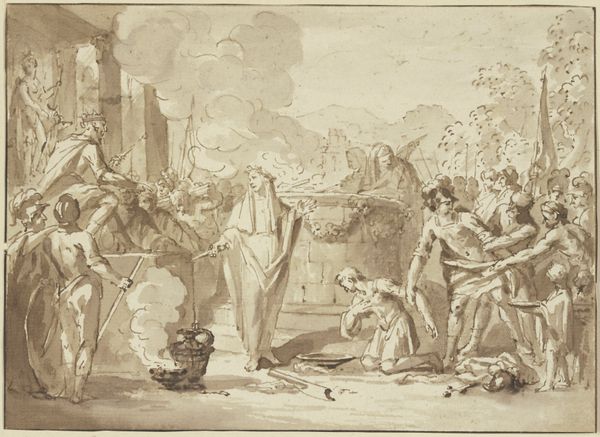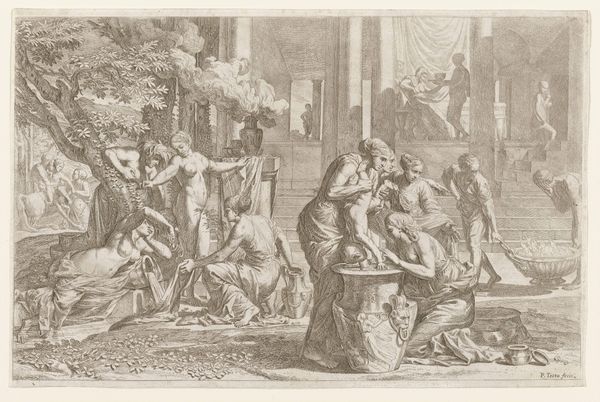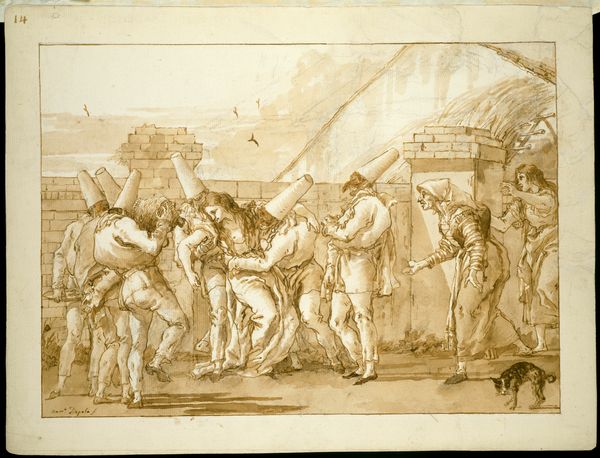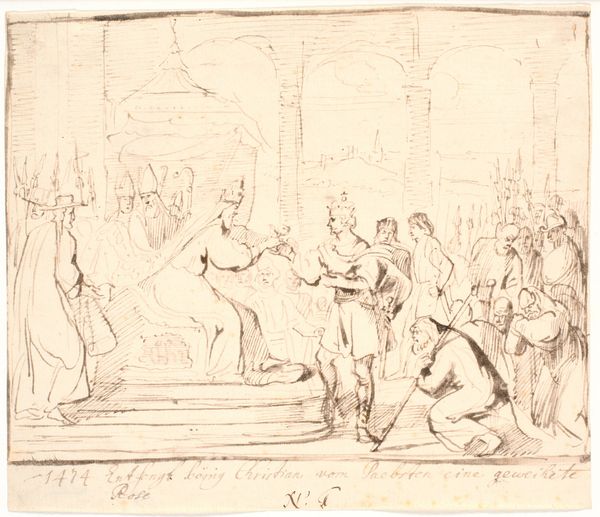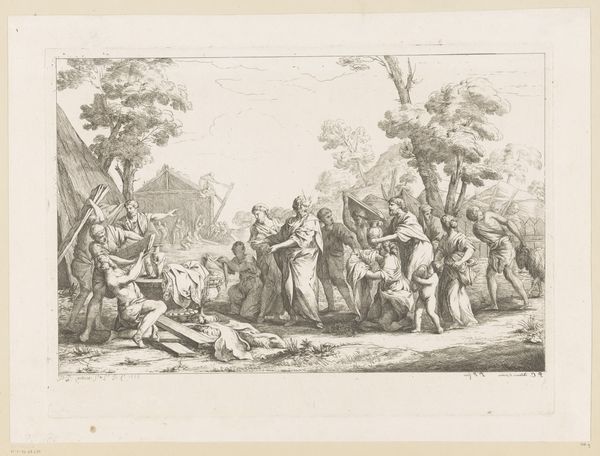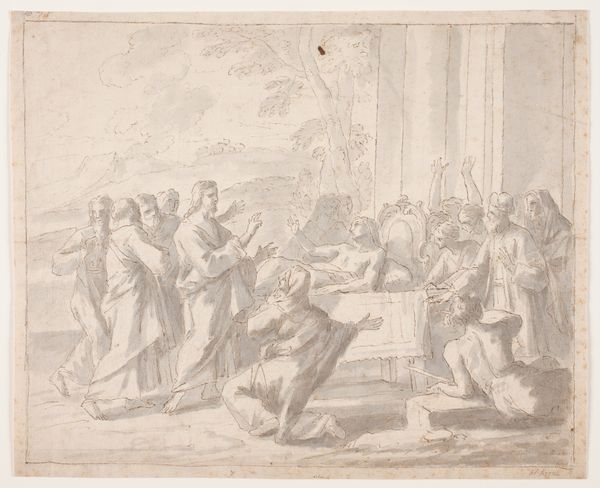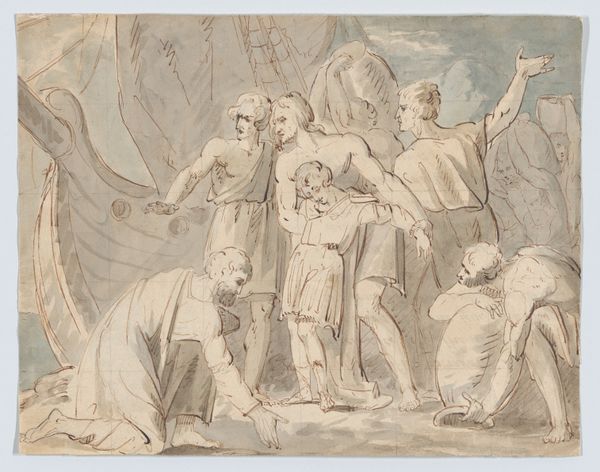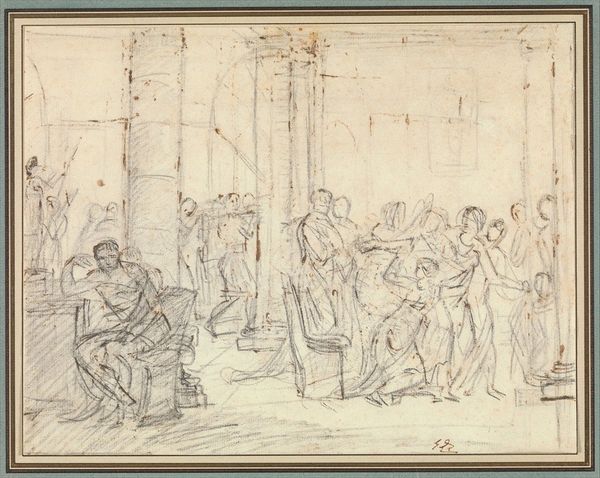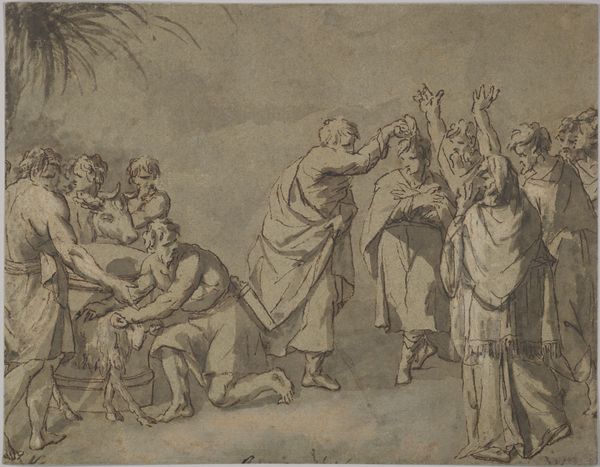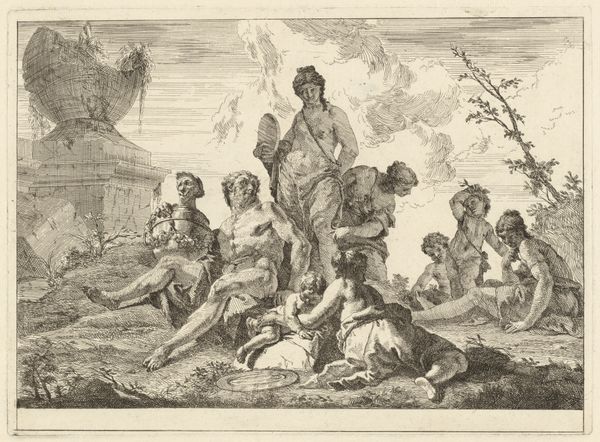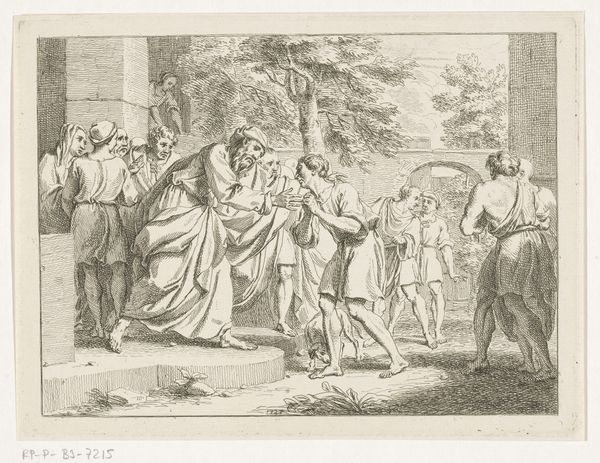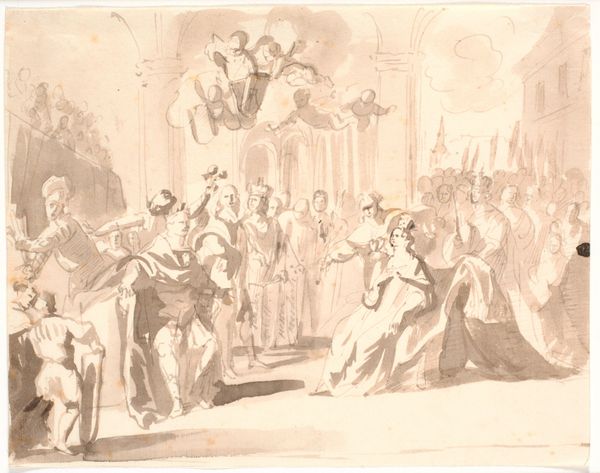
drawing, print, paper, ink, pen
#
drawing
#
allegory
# print
#
pen sketch
#
classical-realism
#
figuration
#
paper
#
ink
#
pen
#
history-painting
Dimensions: 246 × 327 mm
Copyright: Public Domain
Editor: This pen and ink drawing on paper is titled "Feast of Ceres," by Lodovico Lipparini. It’s undated, but the classical-realism style suggests a historical subject. The scene feels theatrical, like a tableau vivant. What can you tell me about how its history influenced this drawing? Curator: The ‘Feast of Ceres’ reflects a moment in the 19th century when classical subjects experienced a powerful revival. Looking at this drawing, consider the role of institutions. Academies, for example, emphasized classical training as the bedrock of artistic skill. Artists like Lipparini, trained within this system, found patronage and recognition by demonstrating mastery of historical themes and academic techniques. Editor: So it was almost a visual language that artists had to learn? Curator: Precisely! Understanding the political context helps unlock the work's layers. After the Napoleonic era, there was a longing for stability and order, mirrored in the perceived values of the Roman Republic: civic duty, harmony, and agricultural abundance, personified by Ceres, the goddess of agriculture. These drawings often functioned as studies for larger paintings, destined for wealthy patrons who aimed to align themselves with these values. Note, too, the precise use of ink wash. This was not merely decoration, but part of a process aimed at exhibiting intellectual and technical proficiency, almost as a demonstration. Editor: That makes sense, seeing it as part of a bigger system instead of just a pretty drawing. What do you make of the temple or palace in the background? Is that setting part of this visual language too? Curator: Absolutely. Its presence elevates the subject, linking Ceres to institutional power and civilization. Notice how it is in the background, almost as set-dressing... Lipparini stages this classical feast as something almost bureaucratic, very self-aware. It’s less about the actual agricultural feast, and more about projecting that classic ideal in the cultural sphere of the present. Editor: I hadn't considered how self-conscious it might be. It’s interesting to think about how the values an artwork portrays intersect with the values of its intended audience. Thank you! Curator: Indeed! Considering art as a product of its cultural institutions opens up many avenues for interpretation and re-evaluation.
Comments
No comments
Be the first to comment and join the conversation on the ultimate creative platform.
